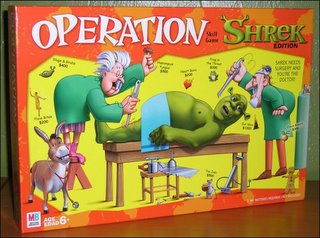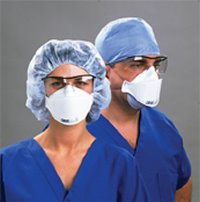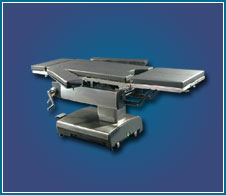 I’m lying on a gurney in the Same Day Surgery staging area at Ocean Medical Center, with Claire by my side, as Robin, our church’s associate pastor, shows up. Her timing is perfect: I’m all ready to go into the operating room, to have the porta-cath implanted. For me, the prayer she offers is symbolic of a whole lot of prayers that are being offered for me today and tomorrow, by a whole lot of people. Thanks, Robin.
I’m lying on a gurney in the Same Day Surgery staging area at Ocean Medical Center, with Claire by my side, as Robin, our church’s associate pastor, shows up. Her timing is perfect: I’m all ready to go into the operating room, to have the porta-cath implanted. For me, the prayer she offers is symbolic of a whole lot of prayers that are being offered for me today and tomorrow, by a whole lot of people. Thanks, Robin.An orderly shows up, telling me it’s time to go. I say goodbye to Claire; the last thing I tell her is that I love her. (I fully intend to come back, of course, but it seems like the right thing to say under the circumstances.) Suitably attired for my journey in a hospital gown and one of those puffy, disposable hats with elastic around the bottom – as much of a hair net as it is a hat – I begin my brief trip through the hospital corridors.
My feet-first perspective from the gurney is an odd one. Everything – the smooth ride, the automatic doors that open at the touch of a button, my recollection of the friendly and efficient preparation by the Same Day Surgery staff I’ve just received – indicates that I’m now part of a vast and well-thought-out system. Human bodies are the focus of this system – living human bodies, transported on a journey of healing.
 Although, as pastor of a local church, I know this hospital well, I’ve now entered parts of the complex that are completely unfamiliar to me: the backstage, “authorized personnel only” areas of Surgery. There’s a kind of anonymity to the people we pass in the hallways back here – attired as they are in surgical scrubs, most of them with masks still in place. Odd images flash into my mind, things I glimpse from the corner of my eye: a gray plastic box on a set of metal storage shelves on which is written “total hip,” a stack of similar plastic boxes, each of them labeled “foot.” Surely these contain some sort of surgical supplies, and not the Frankensteinian array of replacement body parts that immediately comes to mind. Funny thing about the medical profession – sometimes in order to achieve wholeness, there must be this relentless focus on the constituent parts.
Although, as pastor of a local church, I know this hospital well, I’ve now entered parts of the complex that are completely unfamiliar to me: the backstage, “authorized personnel only” areas of Surgery. There’s a kind of anonymity to the people we pass in the hallways back here – attired as they are in surgical scrubs, most of them with masks still in place. Odd images flash into my mind, things I glimpse from the corner of my eye: a gray plastic box on a set of metal storage shelves on which is written “total hip,” a stack of similar plastic boxes, each of them labeled “foot.” Surely these contain some sort of surgical supplies, and not the Frankensteinian array of replacement body parts that immediately comes to mind. Funny thing about the medical profession – sometimes in order to achieve wholeness, there must be this relentless focus on the constituent parts.They park me in the hallway outside the operating room, where I lie for a few minutes, fidgeting. Everything’s nearly ready, a nurse anonymously assures me from behind her surgical mask. I look to my right and see a small, glass-fronted wall cabinet beside me. Behind the glass door is an orderly column of stainless-steel tubes, tagged with colorful labels: “oxygen,” “hospital air,” “evacuation,” “waste,” “vacuum.” Everything’s got its designated conduit in the surgical system, right down to the gases and the bodily fluids.
 They wheel me in, and I feel the same, much-colder temperature I recall from my two previous visits to operating rooms. (Why is it that operating rooms are always cold? I’ll make a mental note to ask someone about that, sometime.) Using a pneumatic foot pump, someone pumps my gurney up to the level of the narrow operating table to my right. When instructed, I slide over onto this “bed,” which is really more like a cloth-covered board. There’s no place to put my arms, I realize – but then a nurse swings over a couple of armrests, first for one arm then for the other. My position, now, is disturbingly cruciform. I try not to think of the associations.
They wheel me in, and I feel the same, much-colder temperature I recall from my two previous visits to operating rooms. (Why is it that operating rooms are always cold? I’ll make a mental note to ask someone about that, sometime.) Using a pneumatic foot pump, someone pumps my gurney up to the level of the narrow operating table to my right. When instructed, I slide over onto this “bed,” which is really more like a cloth-covered board. There’s no place to put my arms, I realize – but then a nurse swings over a couple of armrests, first for one arm then for the other. My position, now, is disturbingly cruciform. I try not to think of the associations.To my left I see a technician in surgical scrubs and mask, sitting in the driver’s seat of some kind of wheeled device that reminds me, for some reason, of a forklift. When I ask what that is, someone tells me it’s an x-ray machine. I recall that Dr. Gornish had told me they would be taking a chest x-ray afterwards, to make sure the device has been placed properly.
The anesthesiologist, seated behind me, drapes an oxygen tube over my face. This is it, I think to myself. The moment of unconsciousness. It’s almost here. I stare up at the large lamp directly overhead, and wait.
At some point the anesthesiologist starts the drip going into my IV. The transition is so gradual (or maybe, so sudden) that I’m unaware of the precise moment I slip out of consciousness. At odd moments, though, I’m disturbingly aware of pain. I have distinct memories of wincing, and telling the operating room staff that it hurts – not once, but several times. The next coherent memory I have is of lying in the recovery room, and feeling angry about the pain. It wasn’t supposed to have hurt like that, I tell myself. I was supposed to be sleeping.
When I mention it to a nurse, she asks if I’d like to speak to the senior anesthesiologist about it – this is not the doctor who worked with me, but another doctor. I ask him about the pain, and he apologizes for my discomfort, but explains that the anesthesia is based on complex calculations that are made even more complex by my comparatively large body mass. I had "sedation," he explains, rather than full anesthesia with intubation (at least that’s what I think I recall him saying this next morning, as I write these words; my thinking was still a little foggy from the aftereffects of the stuff). They need to be very careful that I get just enough anesthetic, and not too much, the doctor explains. I’m left with the impression that the anesthesiologist took his best shot with the numbers, then as the pain pulled me briefly out of my twilight sleep, he made small adjustments to put me under again.
Later, Claire tells me that Dr. Gornish explained to her that the difficulty was related to my sleep apnea. The anesthesiologist, seeing that I had begun having apnea episodes, evidently cut back on the anesthesia a little bit in order to get me breathing again, which is when I began to feel pain. Mental note: whenever I have to undergo surgery again, I’m going to ask if there’s any reason why I can’t bring the BiPap machine (which I use successfully each night to prevent apnea) with me into the operating room. The BiPap’s plastic face mask does include a little valve to which an oxygen tube can be hooked up. I have no way of knowing whether this equipment is suitable for the operating room, but believe me, next time I’m going to ask very specifically about it.
Alternatively, it may be that, due to my sleep apnea, I’m not a good candidate for "sedation" anesthesia, but may require full intubation, which as I understand it keeps the airway open by its very nature.
Over my years of hospital visitation, I’ve heard other patients speak of this experience of waking up on the operating table – not many, but a few. I suppose I’m in that small, unlucky percentage. My memories of the pain are real, but fragmentary, and by the time I get home have become rather blurred. I sit up for a while watching television, my take-home ice pack draped across my shoulder so as to cover the area of the surgery near my collarbone. My head is throbbing from the Percocets I’ve been taking, "as needed." I decide that my "need" is now diminished enough to stop taking those. I’ve never had a very good reaction to that kind of pain-killer – although I know some addictive personalities swear by the stuff, and have made the tablets into a lucrative street drug. Frankly, I can’t see the appeal. Deciding to go it with Tylenol alone from here on in, I head for bed.
4 comments:
Hello from Baltimore. I am a writer and breast cancer survivor who had surgery 3 times this past summer. I recall fearing what you experienced --since the news had been full of reports that patients often awakened on the operating table. Thank goodness I was spared that much.
I wish you all the best and send prayers for your treatment and recovery.
Hi Carlos! It's Barb Davis Smith. I received info regarding your illness from Greg Weigold. I, too, will keep you in my prayers and pray for a full recovery. I have learned through my own trials that we grow the most when we walk through the flames, as long as we hold on to the Lord's hand. May God hold you and keep you close and my the Holy Spirit provide peace and comfort through this new trial.
God Bless you Carlos!
Yours in Christ,
Barb
Operating rooms are cold to prevent infection. Bacteria grows better in warm environments. It also keeps the surgeons awake. Unfortunately the anestheiologist didn't take that into account. Will be praying for you.
Carl, Several years ago I had to have some breast surgery which turned out to be benign. I, too, awoke and actually remember lifing my head up just in time to see the surgeon pulling up what looked like a thin cord (he was stitching me up!). It was not a pleasant experience. Charlene
Post a Comment